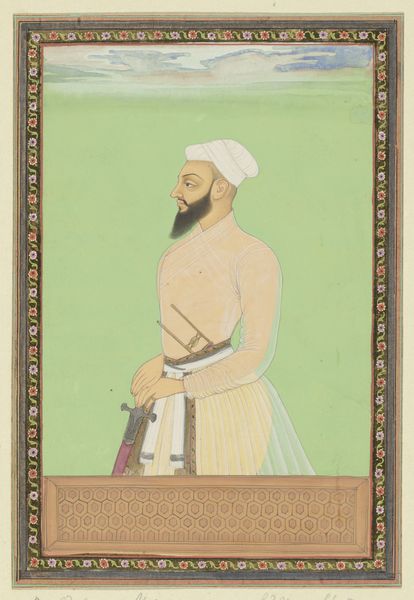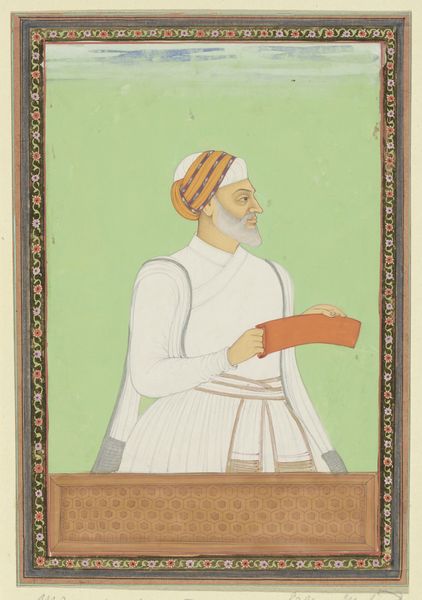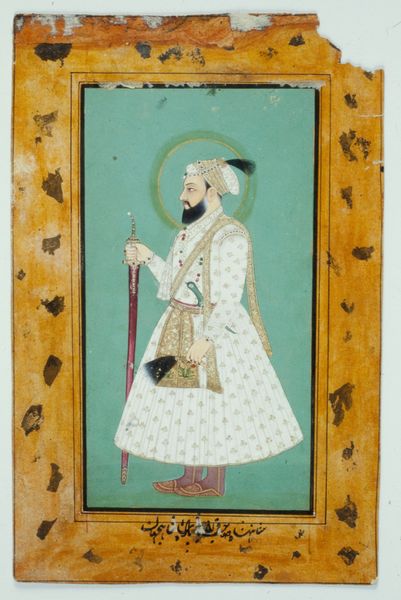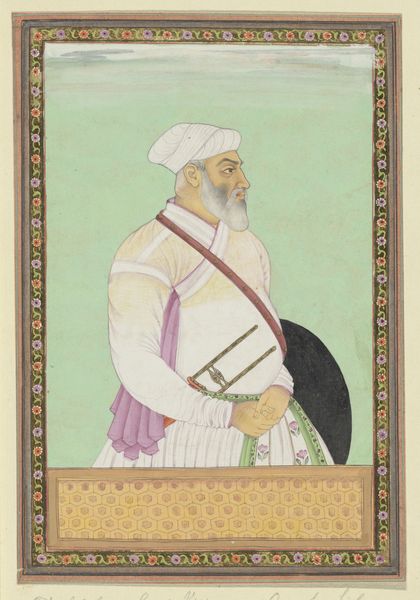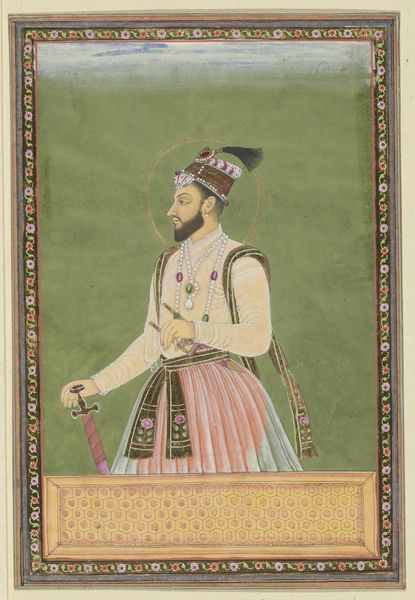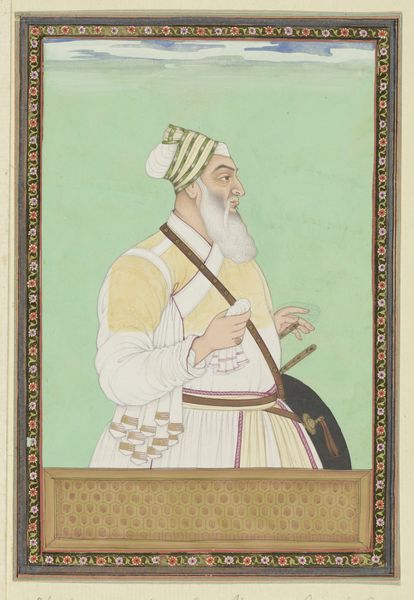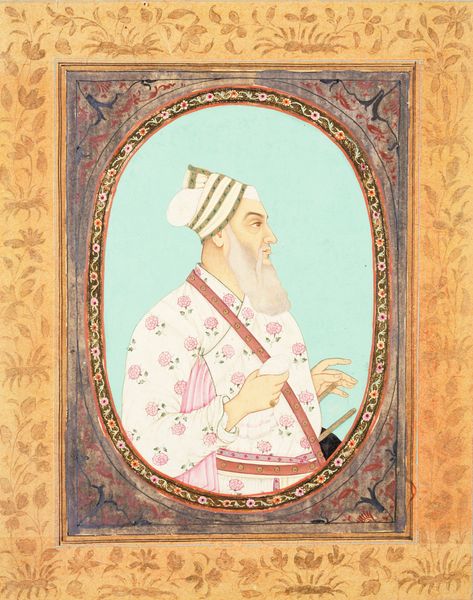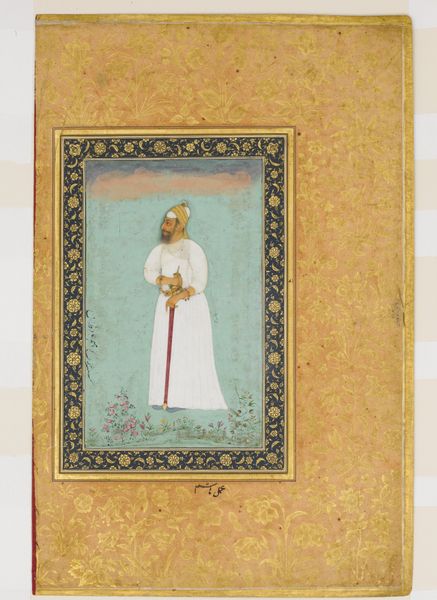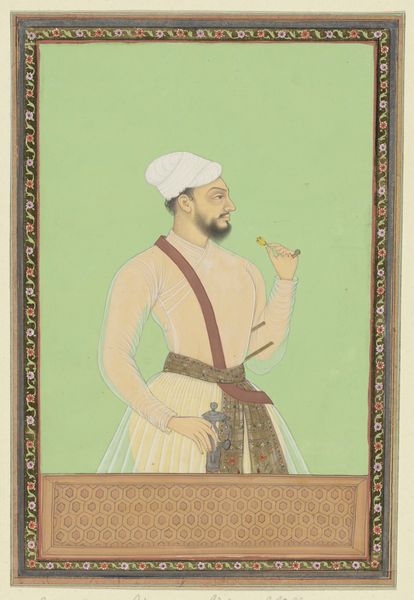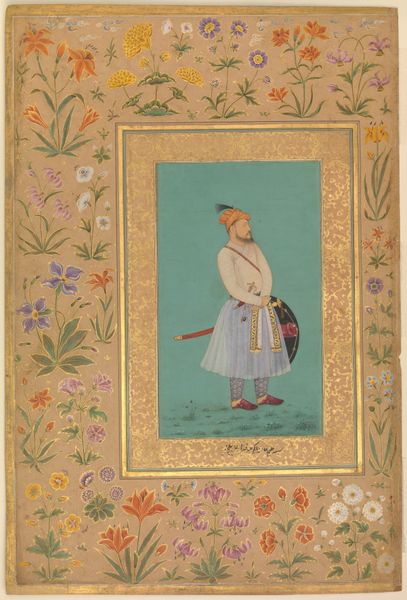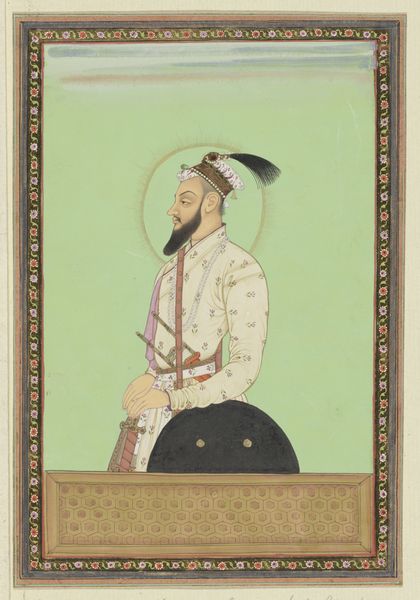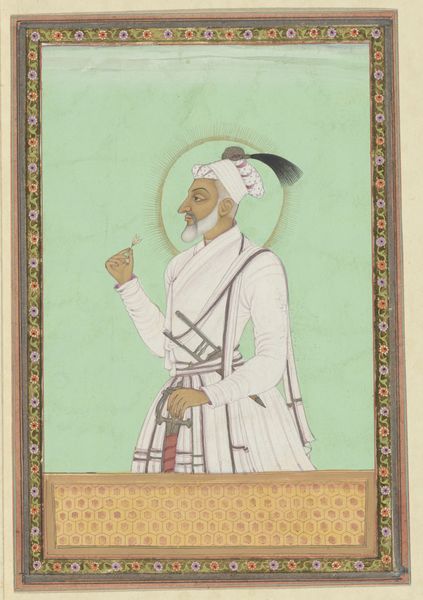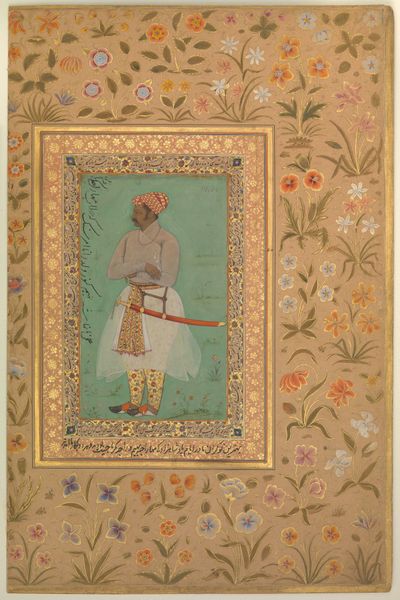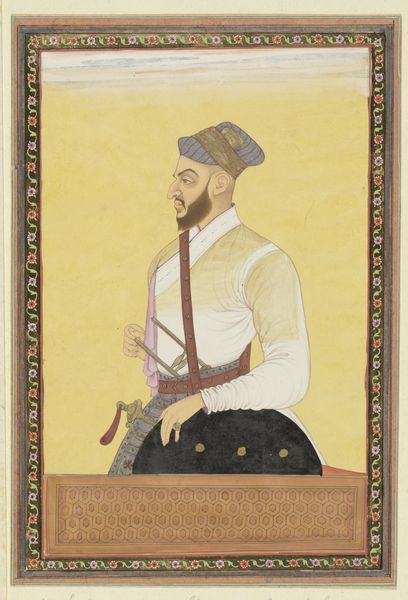
Album Page with a Portrait of Namdar Khan (Side A) and Calligraphic Specimens (Side B) , late 17th century (painting and borders),16th/17th century (calligraphy)
0:00
0:00
painting, watercolor
#
portrait
#
painting
#
asian-art
#
figuration
#
watercolor
#
geometric
#
islamic-art
#
history-painting
#
miniature
Dimensions: Image: 17.8 × 9.8 cm (7 × 3 7/8 in.); Border: 23.8 × 15.9 cm (9 3/8 × 6 1/4 in.); Paper: 41.3 × 27.1 cm (16 1/4 × 10 5/8 in.)
Copyright: Public Domain
Editor: This is an album page featuring a portrait of Namdar Khan. The painting and its borders are from the late 17th century, while the calligraphy on the reverse dates back to the 16th or 17th century. It's held at the Art Institute of Chicago and showcases Mughal artistry in watercolor. What strikes me is the subject's rather nonchalant demeanor given that he is outfitted for protection. What can you tell me about it? Curator: That observation gets to the heart of the intersectional narratives at play here. We must understand portraiture of this kind as an exercise of power and constructed identity. Namdar Khan, rendered in miniature, holds not a sword, but a delicate sprig of what may be symbolic flora. Who was Namdar Khan? How did his status as a nobleman intersect with the politics of the Mughal empire? His gaze doesn't meet ours. What does that imply, historically, about gender, spectatorship and power? Editor: I suppose that does make the question of nonchalance seem naïve on my part. Was the inclusion of the shield more symbolic or utilitarian, then? Curator: Exactly! And by examining both sides, we can contextualize the piece within a broader visual culture that sought to balance the practical, the political, and the aesthetic. Calligraphy was not simply writing; it was, and continues to be, an act of cultural expression, deeply connected to Islamic traditions and intellectual life. Editor: I hadn't thought about it that way. I see how analyzing the piece from that intersectional perspective reveals so much more about the piece as a statement and artifact. Curator: It's through these nuanced readings that we challenge established art historical narratives and open up space for more inclusive understandings of artistic production. Editor: Thank you. It really gives me a deeper appreciation for the album page as more than just a portrait. Curator: Indeed. Let’s remember to ask difficult questions when seeking answers.
Comments
No comments
Be the first to comment and join the conversation on the ultimate creative platform.
